What does it take to manage a cross-organisational group of health researchers? This is a good question to ask Chair Professor and Consultant Kirsten Grønbæk, Chairman of the cross-disciplinary health collaboration within blood diseases ‘CAG Translational Hematology’. According to Kirsten, it is primarily about listening, trusting and ensuring that everyone involved in the joint project are fully committed.
CAG stands for Clinical Academic Group, which is at the core of GCHSP-collaboration which aims to ensure better and faster treatment of patients within a healthcare area by connecting basic research and clinical research more closely. Thus, leading a CAG requires strong competencies within cross-disciplinary management across organisations.
As the Manager of a CAG, You Must Listen to and Trust What Others Do
As a CAG chairman, you do not have the same type of management mandate as when you are e.g. sitting in your own laboratory. According to Kirsten Grønbæk, a significant difference is that a manager in a classic management structure is the formal decision-maker, while a CAG manager must navigate within a flatter management structure.
‘You might say it is a kind of shared management where you have to listen more and trust what the others are doing. My main role as chairman of CAG Translational Hematology is to assemble the CAG group. This is also the case right now where we need to integrate the many different hospital departments in such a way that everyone feels they have a voice’, says Kirsten.
It is Decisive That We Know and Respect What Others Are Doing
CAG Translational Hematology consists of clinical researchers from many different hospital departments across the country and basic researchers from the University of Copenhagen. The collaboration among them requires an open culture that ensures that there is a short path from the basic laboratories to the clinical practice and also, that there is an understanding of how the others are working.
‘When clinicians and basic scientists must collaborate, it is important with an understanding of each other’s workflows and cultures. We need to ensure mutual respect and understanding of each other’s work. We cannot assume that physicians know how basic biologists work and vice versa. As a physician, you have strong focus on patients and, as a basic researcher, you may be preoccupied whether you are able to locate a new ‘target’ in a mouse so that new drugs can be validated.
Basic research is about finding new approaches, and it will generally take a long time to e.g. develop a mouse model that you need to monitor until it may develop the disease that you want to investigate. It may seem a bit slow for a clinician who may already have data available in a database. Conversely, there are aspects of clinical research that basic biologists wonder about – e.g. how difficult it can be to obtain sufficient patient material from a particular subgroup of patients, and how many procedures are needed before it can be done.
The differences are important for the way in which we look at each other’s work. Therefore, new knowledge must be built up in both camps. The CAG can contribute, but it takes time. Therefore, we also need the younger physicians and researchers to understand both areas better than the generations before them. In the CAG, we have joint meetings with the PhD students who are associated with clinical and basic research projects, respectively. This is one way to bring the two disciplines together at an earlier stage’, explains Kirsten
A CAG is Not a Collection of Parallel Projects, but a Joint Project with Common Goals
In addition to a chairmanship, a CAG consists of a number of key members who have an active role in the CAG. Key members may come from different organisations, thus contributing knowledge and networks to the CAG. But the very consolidation of the CAG does not necessarily happen by itself.
‘It is crucial that you get the right people to join – people who see it as a joint project. It should include those who wish to share their knowledge and who want to collaborate. It is also about having a good relationship with each other across disciplines, trusting each other and appreciating the value of collaborating. If you succeed, you get valuable input and knowledge from each other. This is how – in our CAG – we have worked together to come up with new ideas that need to be integrated into the joint project’, says Kirsten.
Shared Infrastructure Supports Common Knowledge
Kirsten’s group has received funding from several sides, but to tie it all together they have used the CAG funds to create an infrastructure.
‘We have a joint board where you can come up with ideas and decide which projects should be accepted. This ensures that stakeholders from many disciplines are involved, and it prevents us from creating parallel projects instead of the joint project. It helps to bind us together.
As part of the common infrastructure, we have also established joint biobanking, and we have hired project nurses for the various departments to ensure the collection of the material. It is something we will all benefit from. When all this happens across disciplines, we get a larger patient base as well as input and knowledge from everyone in the collaboration. This applies to e.g. the collaboration with Aalborg, who has specialised knowledge of database development and Roskilde and Odense who have extensive experience with life quality studies, while here at Rigshospitalet and BRIC we are good at the basics.
The CAG has enabled us to work across the entire country. The blood diseases we work with are relatively special and heterogeneous. Thus, the collaboration means that we may now relatively quickly generate a large cohort. This is the very cornerstone of our work and incredibly important in order that we may be attractive partners and competitive in relation to the large foreign hospital units that conduct research into similar subjects’, says Kirsten.
The CAG Has Produced a Ripple Effect
‘What began as a project at Rigshospitalet and UCPH has now become a nationwide hematological project. For me, the CAG has been an important incentive to think bigger. You might say that the CAG has produced a ripple effect and created the basis for starting an international project in the long term. It has also given me a new voice, because GCHSP’s partner organisations and most recently the support from the Danish Cancer Society have helped to confirm that cross-collaboration is a good idea. It is a great advantage to have both the support of the organisations and a mandate to unite the country’, says Kirsten.
The Strength of Personal Relationships and Networks
Kirsten Grønbæk was trained in Odense, where she has also worked in the hematology department. Since then, she has been employed at Herlev Hospital, the Danish Cancer Society and Rigshospitalet. The fact that she has experience from many places means that not only does she have broad knowledge of hematology in Denmark, but also a wide network across the country.
‘Knowing people personally always makes it easier. It means there is trust. I am used to working with many departments from across the country. It gives me a good ballast and a wide approach with respect to the CAG collaboration’, concludes Kirsten.
Læs mere om Kirsten Grønbæk (in Danish)
Læs mere om CAG Translational hematology
Læs mere om GCHSP








